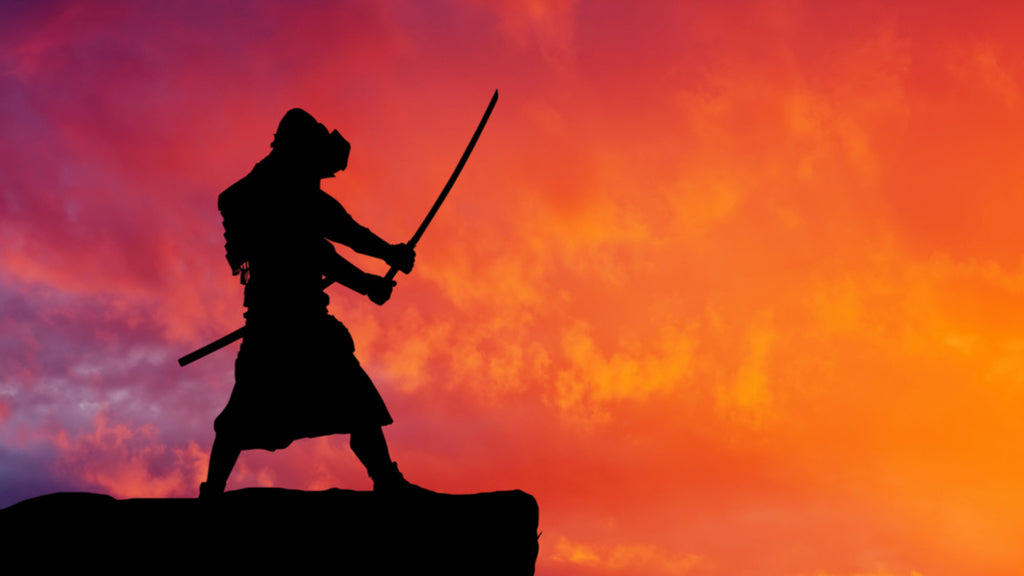The Carrier of Samurai Spirit, the Unique Beauty of Japanese Samurai Sword

Those who have seen the Demon Slayer must be familiar with the key weapon in it - Nichirin Sword. The prototype of the Nichirin Sword is Japanese swords.
It is known as one of the three cold weapons of Japanese swords, and often appears in anime and film works, and it is famous in the world as the symbol of the samurai. But today, the Japanese knife has lost its original function and become a kind of handicraft, so I will take you to know the details of each part of the Japanese knife from the perspective of handicraft today.
The development of the Japanese knife has gone through many periods, mainly start from the Heian period, which was called Chokuto before. Starting from the late Heian period, the development of Japanese katana has gone through the Kamakura period, the Nambokucho period, the Muromachi period, the Edo period, and until the beginning of the Edo period, the shape and system of Japan samurai sword was gradually finalized and has been spread to this day. Since the late Heian Period, katana has changed the form of Chokuto and constantly changed its shape and style according to the needs of war, and after the Edo period, the shape of katana wes fixed, mainly was Tachi, Uchi katana and dagger.
1. The Warabi-tetou of Japanese samurai swords
Since the Japanese Kofun period, there have been swords made of iron, the most famous one is the "Kinsakupe Iron sword" unearthed from the ancient tomb of Inaho Mountain. The sword from this period to the Heian period is called Chokuto, its shape is different from the classic katana of the later period, which is usually straight sword, broadsword, double-edged sword, etc. The earliest form of its origin was the Warabi-tetou. In the beginning, the Warabi-tetou was straight and thin, in the later period, the blade was made a certain curve for the convenience of cavalry fighting, and because its blade was like a handful of pteridium aquilinum var, it was called Warabi-tetou. The warabi-tetou is often believed to be the origin of Japanese samurai swords.

The Warabi-tetou was often used as burial goods in the Kofun period, and there are more than 200 Warabi-tetou have been unearthed in Japan till now, most of which are unearthed from ancient tombs and ruins. The most unearthed site is in the Iwate Prefecture, Japan. There are also someone believe that the Warabi-tetou was made by Emishi.
2. The Odachi sword of Japanese samurai sword
Since the late Heian Period, Japanese samurai sword has gradually changed into Tachi style, which is of narrow front blade body and wide after, slender, graceful and with a curve. During this period, samurai forces were active and wars were numerous, it is represented by "the Twelve Years Oushiyuu Kassen" and "Gosannennoeki", The Abe clan was wiped out, and the Kiyohara clan monopolized the area above northeastern Oushiyuu. Various wars played a great role in promoting the development of Japanese katana, and led to the emergence of different schools of swords in areas such as Bizen, Yamato no kuni, Yamato no kuni, etc. They made excellent knives with their own characteristics, and most of them were in the shape of Tachi, so they were called the generation of Tachi. And the famous swords include "Dojigiri" and "Kogitsunemaru".

Hand Forged 53inch Nodachi Japanese Samurai Sword - Coolkatana
Dojigiri is one of the famous Japanese five swords in the world, and it is often combined with the author's name as Dojigiri Yasutsuna. Legend has it that during the reign of Ichijō Tennō in Japan, there was a homicidal and extremely alcoholic monster called Shiyutendouji in Tambanokuni, he often robbed treasure, took away mother and female children to eat, and was killed by the great soldier called Minamoto no Yorimitsu in the Heian period with a very sharp sword, therefore, the sword was named Dojigiri Yasutsuna and was passed down as one of the five swords in the world. The Kogitsunemaru is a famous sword in Japanese legend, but whether it really exists or not remains to be seen, or it existed but disappeared in the World War II, because there was a fox who claimed itseft to be an emissary of Inari God while forging, its creator Mikazuki Munechika named it Kogitsunemaru.
3. The Hadou Nodachi of Japan samurai sword
During the Kamakura period, the world of cold weapons began to be developed rapidly under the rule of the Kamakura family of the samurai, the Kamakura royal family even set up an imperial sword district to create katana, who worked day and night to created new types of katana. During the Kamakura period, the blade of samurai swords became wide and was required to be made of rigid materials, and in the late Kamakura period, the blade became shorter and it was developed into the short sword.
But from the end of Kamakura period to the Nambokucho period, the two invasions of Genkou brought great turmoil to Japan, which made its political and social began to become chaotic and continuous fighting gradually. Therefore, the development of sword district began to flourish. On the basis of the original length of swords, the blade body was lengthened and widened, and created a new type of swords, big Odachi swords (which is also called Nodachi). the big Odachi sword is more than 5 feet long and is often used in the army, straighten the sword and the arm at the same time and cut from the top with a single cut to create great force and pressure while using, and cut it down again when its blade hits the ground and bounces back. Therefore, the big Odachi sword is usually a synonym of courage and strength among warriors, and is often seen on the battlefield.
